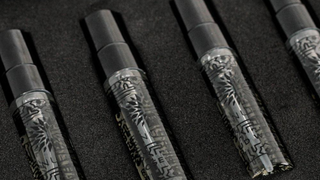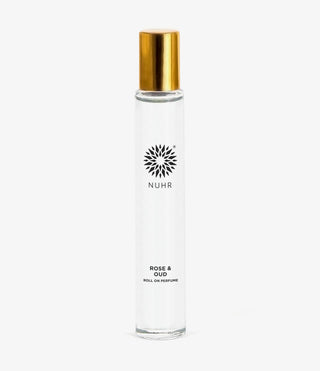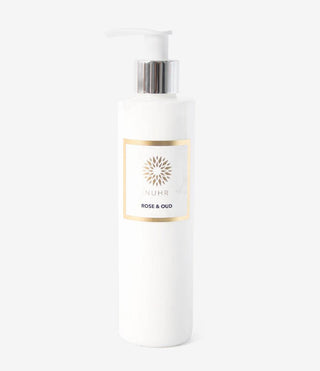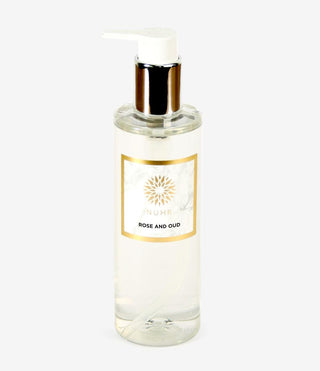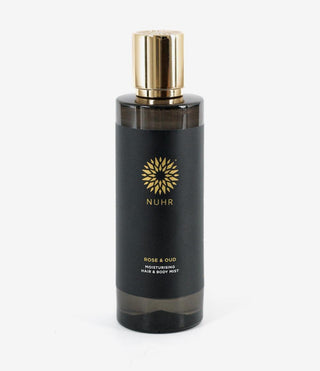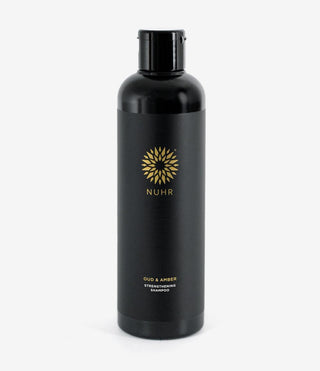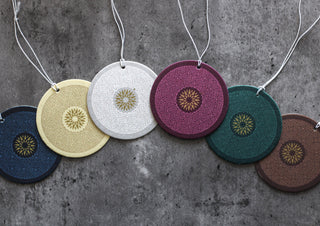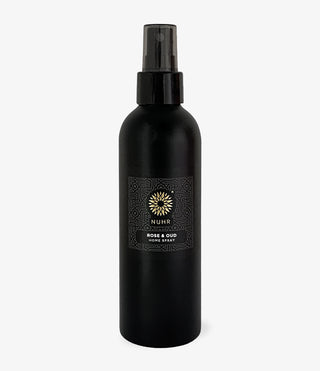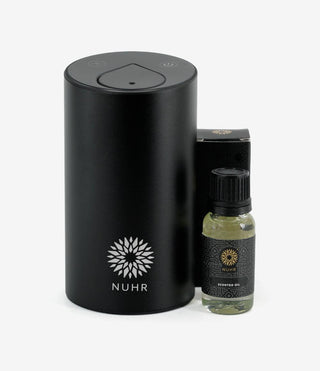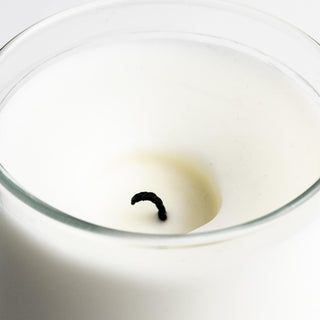When it comes to candle tunnelling, there's nothing more frustrating than watching your precious luxury oud candle wax go to waste. Candle tunnelling is the phenomenon of a lit candle melting through the centre of the candle without melting all the surrounding wax, leaving a ledge. This can be caused by several factors, such as using a low-quality wick or burning your candle for too short of a time. But there are ways to prevent candle tunnelling and make sure your candles last until the very end.
HOW TO FIX CANDLE TUNNELLING
If you have a tunnelling candle, there's no need to despair. Here are a few tips on how to fix it. First of all, use wick trimmers to make sure that the wick is about ¼ inch. This will help the candle burn more evenly.
Make sure your candle burns all the way to the edge of the glass the first time you burn it. This can take up to 4 hours but will save a lot of wasted wax through tunnelling.
If your candle is still tunnelling, try this trick: hold a lighter horizontally under the base of the candle until you see the wax start to melt. Then, carefully tilt the candle so that the melted wax pools in the depressed area around the wick. Continue tilting and holding the lighter until the entire surface of the wax is melted and level. Let the wax cool and solidify before relighting your candle.
The Aluminium Trick to Prevent Candle Tunnelling
The aluminium trick, also known as the foil method, is a simple way to fix or prevent candle tunneling by helping the wax melt evenly across the entire surface.
Here's how it works:
-
Light your candle as usual.
-
Tear off a piece of aluminium foil and wrap it around the top of the candle, creating a tent or dome that covers the unmelted wax while leaving an opening in the center for the flame to breathe.
-
Let the candle burn for 1–2 hours. The foil traps and reflects heat inward, encouraging the outer wax to melt and level out with the center.
-
Carefully remove the foil once the wax pool reaches the edges.
This trick works best when tunneling is still shallow and the wick is accessible. Always monitor your candle while using this method, as the container and foil will get hot.
HOW TO FIX CANDLE TUNNELLING WITHOUT FOIL
If you love oud candles or classic candles but hate when they tunnel, there's no need to resort to using foil. There are a few easy ways to fix this problem.
One way is to simply place the candle in the freezer for about an hour before you plan to light it. This will cause the wax to contract and hopefully prevent tunnelling.
Another way is to melt the top layer of wax before lighting the candle. You can do this by holding a lighter close to the wick for a few seconds or by using a hair dryer on low heat. Just be careful not to melt too much wax or you'll end up with a puddle.
WHY WICK SIZE MATTERS
Even if you burn your candle properly, tunnelling can still happen if the wick isn’t the right size for the candle. A wick that’s too small won’t generate enough heat to melt the wax all the way to the edges, which causes the flame to dig downward instead of spreading outward.
This is more common in mass-produced candles that use lower-quality materials, but it can happen in high-end candles too.
What to Look for in a Candle
A well-designed candle will have a wick that's properly sized to the container’s diameter, ensuring the wax melts evenly across the surface when burned as directed.
If you’re shopping for a new candle, look for ones from reputable makers who prioritise wick quality — and don’t be afraid to ask what type of wick is used.
UNDERSTANDING CANDLE MEMORY
Candle wax has what's known as a “memory.” This means that the way a candle burns the first time sets the stage for how it will burn every time after. If the wax only melts in a small circle around the wick on the first burn, it will continue to melt in that same pattern moving forward.
That’s because previously melted wax stays softer and requires less heat to liquefy again, while unmelted wax remains harder and resists melting. This uneven melting causes the flame to tunnel downward through the centre of the candle, leaving the harder outer wax untouched.
By letting your candle burn long enough the first time to fully melt the surface, you “train” it to burn evenly every time.
HOW LONG TO BURN YOUR CANDLE
The best way to prevent tunnelling is to let the candle burn long enough for the melted wax to reach the edge of the container. This is especially important during the first burn, when the wax sets its “memory” and determines how it will melt in future burns.
Rule of Thumb for Candle Burning
Burn your candle for one hour per inch of diameter. For example, a 3-inch wide candle should be burned for about 3 hours on the first use. This helps create a full melt pool and prevents a memory ring from forming in the centre.
Taking your time on that first burn will pay off in a cleaner, longer-lasting, and more beautifully burning candle.
ADDITIONAL TIPS TO PREVENT CANDLE TUNNELLING
Preventing tunnelling is just one part of getting the most out of your candle. There are a few more tips you can follow to ensure your oud or luxury candles perform beautifully from the first burn to the last.
Always trim the wick before lighting. Keeping your wick trimmed to about ¼ inch each time you light your candle helps control the flame size and reduces the chances of soot or uneven burning. Ever wonder why your flame is too high or chaotic? An untrimmed wick can cause the flame to flicker or burn too hot, which contributes to tunnelling or mushrooming at the top of the wick.
Avoid burning your candle in a drafty area. Air currents from open windows, fans, or vents can disturb the flame, causing it to flicker and burn unevenly. This can lead to tunnelling or even make one side of the wax pool deeper than the other.
Allow your candle to cool completely between burns. Letting the wax fully solidify before relighting helps maintain the integrity of the melt pool and the wick. Rushing to relight a warm candle may cause the wax to tunnel further or weaken the wick.
Use a candle snuffer to extinguish your candle. Blowing out the flame can sometimes cause wax to splash or disturb the evenness of the surface. A snuffer helps preserve the shape of the wax pool and prevents soot from forming on the jar.
With these simple practices, you can extend the life of your candle and avoid common issues like tunnelling altogether.
WHEN TO USE WAX MELTS INSTEAD
If you find that candle care feels like too much effort — or if tunnelling keeps happening despite your best attempts — wax melts may be the perfect alternative. Wax melts offer the same rich fragrance experience as candles but without the need for a wick or open flame. They’re ideal for situations where you want a quick burst of scent without having to wait for a full wax pool to form.
Advantages of Wax Melts
Wax melts eliminate the risk of uneven burns and don’t require trimming or specific burn times. Simply pop an oud wax melt into your burner, switch it on or light the tealight, and enjoy.
Because they’re flameless, wax melts are especially useful in households with pets or children, or in smaller spaces where candles may not be practical. Plus, they’re a great way to try out new scents without committing to a full-sized candle.
For effortless, clean fragrance every time, wax melts are a smart and stylish choice.
FREQUENTLY ASKED QUESTIONS
What causes candle tunnelling?
Candle tunnelling is usually caused by burning the candle for too short a time on the first use, which prevents the wax from melting evenly across the surface. Other common causes include using a candle with a wick that’s too small for its container.
How do I fix candle tunnelling?
To fix a tunnelling candle, you can use the aluminium foil trick to reflect heat back into the wax, or gently melt the surface with a hair dryer. Both methods help even out the wax pool and restore your candle’s burn quality.
How long should I burn a candle to prevent tunnelling?
To avoid tunnelling, burn your candle for one hour per inch of its diameter during the first use. For example, a 3-inch candle should burn for at least 3 hours to allow the entire top layer of wax to melt evenly.
Can tunnelling ruin a candle?
Yes, tunnelling can drastically shorten a candle’s lifespan by leaving unused wax around the edges. It can also make the wick harder to relight and prevent the candle from burning properly in future uses.
Do expensive candles tunnel too?
Even luxury candles can tunnel if not burned correctly, especially on the first burn. However, high-end candles are typically better designed with properly sized wicks to reduce the risk.
Are wax melts better than candles for avoiding tunnelling?
Wax melts don’t tunnel because they don’t use a wick or require an even wax pool. They’re a low-maintenance alternative that offers consistent fragrance without the risk of uneven burns.


